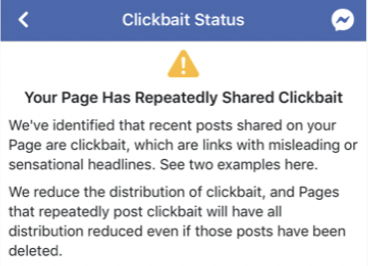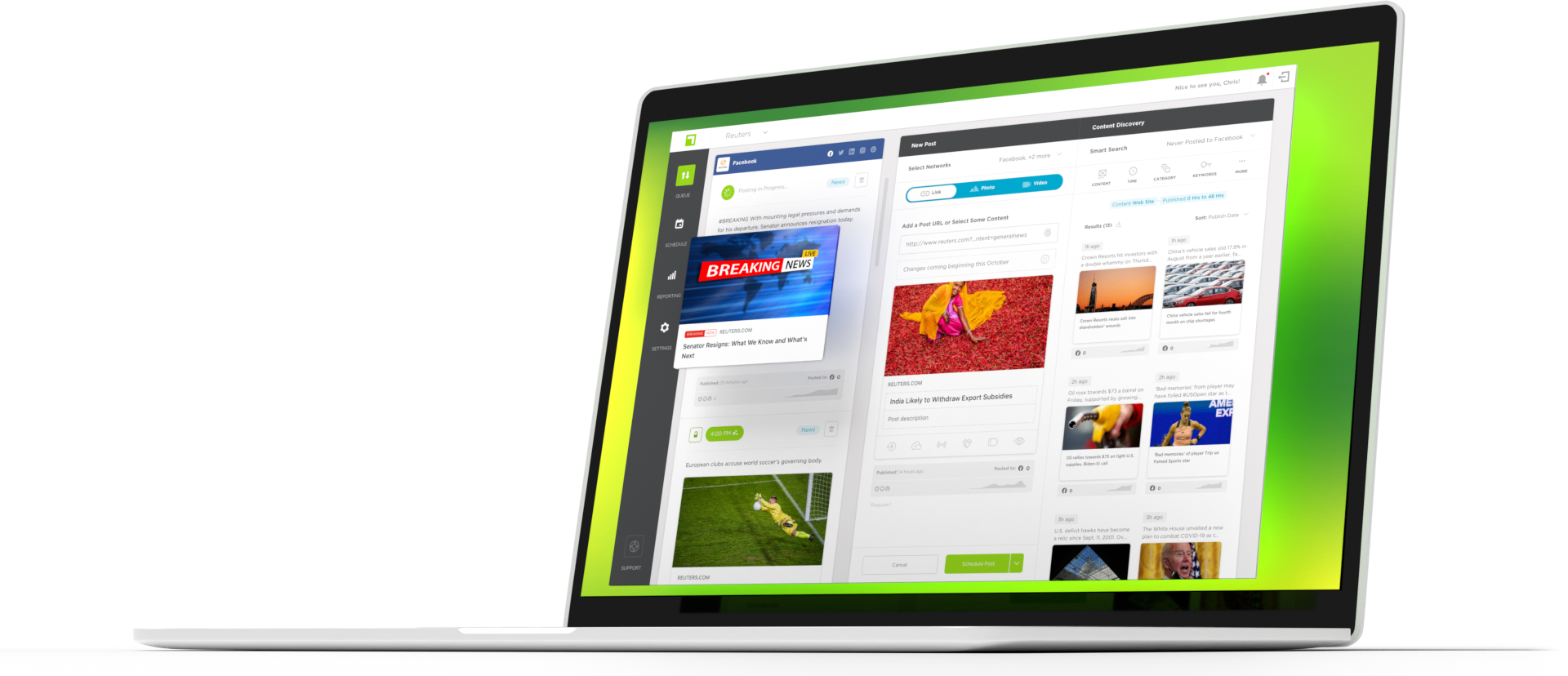“This piece has done well in the past. What’s wrong?”
“We got tons of likes, but not a lot of click-through. Hmm…”
“Why am I reaching fewer people?”
Clickbait content was once a major traffic driver of Facebook. You know the type: Salacious headlines that end with phrases like “You’ll never believe what happened next!” While many publishers consider clickbait content easy to spot, some of it can be a lot trickier to identify. Since updating their policies in 2017, Facebook has been more closely monitoring content that resembles clickbait. In short, they’re doing their best to avoid driving traffic to low-value content. This means publishers have to reduce clickbait on Facebook, especially going into 2024.
With another election year upon us, publishers must take extra precautions to prevent an uptick in clickbait on Facebook and reduce a dip in impressions. In fact, Facebook’s initial clickbait protocol emerged after a presidential election, so the algorithm will be highly cautious about promoting this type of content.
Dips in Facebook impressions have a ripple effect on the performance of everything else your brand does on the platform, especially during seasons of potentially higher traffic (i.e., election cycles for news brands, winter holidays for lifestyle brands, etc.). Facebook’s Transparency Center details the algorithm’s priorities and the ways you can be flagged as a publisher—you’ll notice that clickbait is high on the list. But do you know how to avoid posting engagement bait on Facebook?
What is clickbait?
Clickbait content is created to get people to—you guessed it—click. This means that the headline and/or post copy entices the user to click to see more by obscuring essential information and sensationalizing the story in the social media setup. This is a problem for the publisher because users who visit clickbait content often abandon the article when they realize it doesn’t deliver. This results in a high bounce rate and negative feedback on Facebook posts.
What is the impact of breaking the policy?
Facebook scores pages. They can see a lot more than you think—including how much time people spend on an article once they click through, the percentage of ad content on destination links, and more. If you receive a lot of negative engagement or low-performing posts, Facebook will downgrade your page and slash your reach. In short, posting clickbait can reduce not only the impressions of clickbait posts but everything else from your account. Some things to keep in mind:
- Individual posts are not flagged with a notification in real time. However, you will get an alert if you receive too many flags. Of course, the process is pretty opaque, and you won’t know there’s a problem until there’s a big problem. The alert only shows a few example posts, not the full scope of all offending posts.
- In 2019, Facebook would send notifications to followers of pages that have reduced distribution, as was reported about the Reductress page.
- Deleting or editing flagged posts will not help. Unfortunately, there isn’t a quick ticket out of the dog house.
Ultimately, if a page is flagged, your reach will be reduced, and your average impressions per post will be lower. End result: Fewer clicks from Facebook and an overall drop in traffic to your site. Publishers have reported that the flag period can last weeks, but the effects can last for months while the page regains its standing in the algorithm.

Clickbait Prevention Principle #1: Withholding information
Don’t make your audience click to find out what the story is. Your job is to make it interesting that they want all the details. Hiding the hook and forcing them to click to get the rest of the story is shady and can leave your audience feeling frustrated.
- What to Avoid: Withholding information in the headline
- What to Do: Share headlines that inform the audience
- Clickbait Template Example: “There’s One Thing That We’re Not Telling You Yet”
- Guidance:
- You don’t have to give away the point entirely to avoid clickbait tactics. You still want to compel the user to click through to learn more.
- Think about the 5 Ws (who, what, when, where, why + how) and be strategic in how you answer them
Clickbait Prevention Principle #2: Sensationalizing content
It is tempting to oversell a story to get people to click. But if your story doesn’t deliver on the promise of the headline, then you’re going to wind up with a bunch of disappointed readers. Nobody likes a bait-and-switch. While you should use compelling language and work hard to pull the most exciting angle for your audience, you always want to be sure that the story lives up to the hype.
- What to Avoid: Exaggerate or sensationalize content in a headline and mislead readers
- What to Do: Post headlines that set realistic expectations
- Clickbait Template Example: “You Won’t Believe This One Thing That We’re Not Telling You Yet”
- Guidance:
- Avoid common sensationalizing words – life-changing, genius, surprising, mysterious
- Use qualifying words like can, may, or could
- YES example: “Mother-Daughter Trips Could Help You Live Longer”; No example: “Mother-Daugher Trips Will Help You Live Longer”
What else should you consider?
- Syndication: Posting a syndicated article that qualifies as clickbait will negatively impact your brand, not the original publishing brand
- Cross-Posting: Posting an article that qualifies as clickbait that another brand wrote could negatively impact your brand even though you are not the author
- Recirculation: Even if an article overperformed and was not flagged in the past, it could be flagged now. Standards have changed, so make sure that current standards are being upheld.
- Post Copy: Clickbait can exist in a headline or the post copy, check both parts of the post. Fixing a headline, but using an old clickbait-centric post copy could still result in a flag.
- Social Headlines vs. On-Site Headlines: While Facebook’s documentation does not explicitly state a difference, it does not appear that a clickbait headline used on-site plays a factor if the headline is revised in the social post before posting to Facebook.
You know how to reduce clickbait on Facebook. What Now?
More often than not, clickbait is unnecessary. There is always a more compelling way to tell your story. If your content is strong, you won’t need to trick your audience into reading it. Strong content will result in more meaningful engagements and bring your readers back for more. Reduce clickbait on Facebook, create quality content, and you’ll much much better off in the long run!

